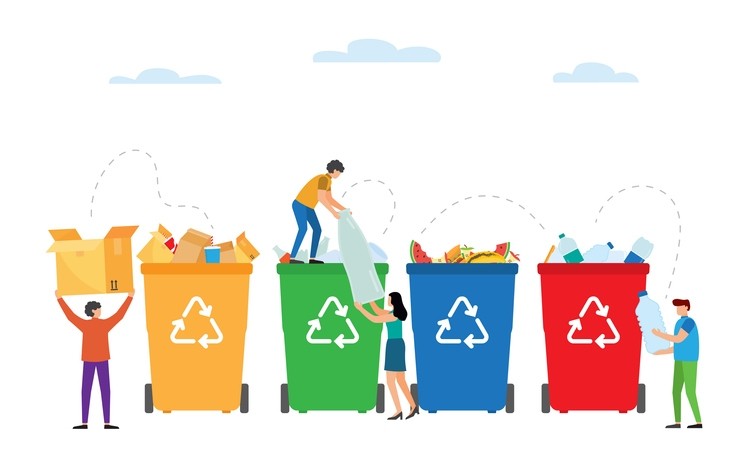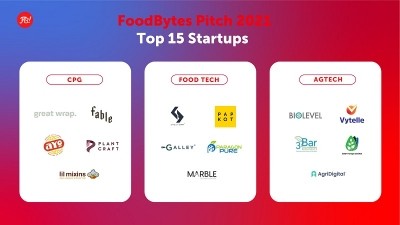Sustainable packaging gains as COVID “shock” ebbs, but carbon calculations pose challenge

“In 2021, sustainable packaging will [again] be front and center of the consumer’s minds and corporates minds, even though it was slightly paused by the COVID-19 pandemic,” Xinnan Li, associate food & AgriBusiness Rabobank, said at a FoodBytes! roundtable discussion Jan. 26.
She explained that early in the pandemic sustainability efforts to reduce packaging and limit single-use plastics “was paused for a few months … for hygiene purposes,” with companies like Starbucks suspending programs encouraging consumers to bring reusable cups and instead favoring single-use paper cups for protection from the virus. This same mentality translated to more individually wrapped foods, single-serve beverages with clear seals and an uptick in contactless deliveries and take-out that generated more packaging.
“Once the initial shock [of the pandemic] was over, and everyone had a chance to slow down while working from home and take time to think about whether their packaging is sustainable and really look at all the Amazon boxes they ordered or the takeout food boxes and plastic trays and consider whether they are good for the environment,” we saw a resurfacing of sustainability concerns and trends from 2019, Li said.
In response, companies have announced ambitious sustainability and sustainable packaging targets for 2025, 2030 and 2050, she said.
Two paths to sustainability
To meet those goals, Li said she is watching innovation take two main directions.
“The first is material innovation – so the example of substituting plastic packaging with paper packaging or incorporating recyclable material or eliminating or replacing hard-to-recycle packaging, such as plastic films,” with compostable options or even edible alternatives, she said.
“The second, and there are a lot of partnerships between corporates and startups on this second part, is around innovation on the recycling front that is a requirement for both the technological advancements to lower recycling costs and improve recycling efficiency, but also to build infrastructure for the recycling system,” she said.
While broadly supported by industry, consumers and innovators, many of these efforts are still in development and have yet to be proven – making them potentially vulnerable to other sustainability goals that could inadvertently derail them or siphon away resources and support, Li cautioned.
Will carbon labeling favor plastic?
One such threat could come from a push for companies to clearly label carbon footprint calculations on packaging alongside nutritional information, Li said.
She acknowledged that carbon labeling likely will come to Europe before the US, and is “still quite some years down the road” for America, but noted companies already are considering how to reduce their carbon footprints so that when they disclose it to the consumer in labels it will be as low as possible.
The drive to reduce carbon footprints could prompt some companies to favor plastic over other renewable resources because it is the lightest and highest performing barrier material for food and beverages, Li said.
“Plastic may even score higher than glass bottles or metal cans for some categories,” which could trigger “a lot of controversy,” she said.
To ensure that carbon labeling efforts don’t negate other sustainability goals, Li said industry and regulators will need to reach a consensus on how carbon calculations are made.
Despite potential complications around carbon labeling, Alejandro Marabi, external innovation global team at PepsiCo, said that “everyone in the industry is working to make it better.”
He explained: “When we set targets on sustainability, we take all the knowledge that we have today and extrapolate that to where it can go. So, I think we all understand that this will come, and I cannot tell you when, but certainly we have seen” regulatory and industry efforts to provide consumers with the information they need to make the best choices.
“It is just not an easy process,” he added.
Will anti-viral packaging be the future?
As companies continue to balance sustainability and safety concerns, Li suggested anti-viral packaging developed years ago could find renewed interest and traction.
“We’ve seen companies launching anti-viral or anti-bacterial membranes coated on either plastic packaging or paper packaging or paper boards so that within 10 to 15 minutes it will eliminate a significant amount – up to 95% 99% -- of bacteria or virus on the packaging,” she said.
“Obviously there is a cost challenge, so when this technology was launched five or ten years ago it didn’t catch fire, but COVID really has given these kinds of technologies a new opportunity and we are seeing companies getting into the space,” she said.
She acknowledged that for now interest in anti-viral packaging is still niche, but she added, “you never know what’s going o happen in one or wo years. Maybe anti-viral or anti-bacterial packaging is going to become the standard of packaging in the future. So, that’s something we will continue to keep an eye on as well.”










